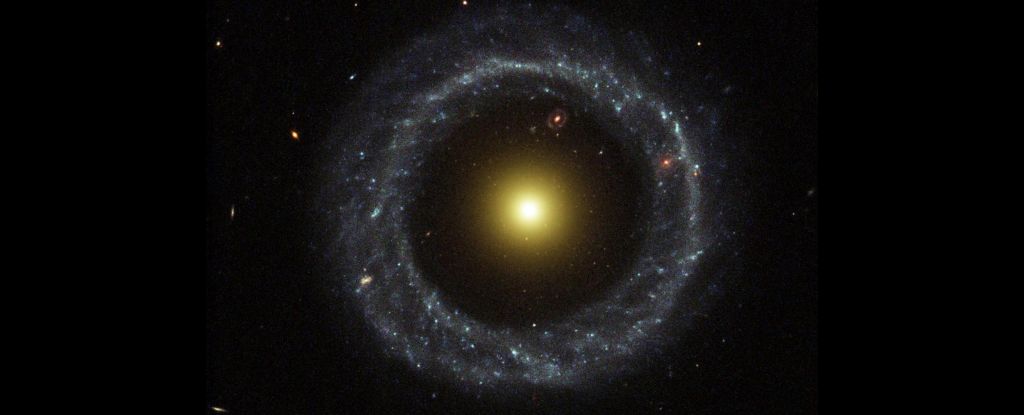
The vastness of the Universe continues to astound scientists as they grapple with a range of profound mysteries. As discoveries unfold, they often raise new questions, leaving experts eager to unlock the secrets of space. Among these enigmas are seven particularly perplexing phenomena that have stumped researchers for years.
The Hubble Tension: A Discrepancy in Cosmic Measurements
One of the most significant puzzles is the Hubble tension. Multiple lines of evidence confirm that the Universe is expanding, yet measurements of its expansion rate, known as the Hubble constant, diverge significantly. Two primary methods yield conflicting results: the standard ruler approach, using cosmic microwave background data and baryon acoustic oscillations, suggests a rate of approximately 67 kilometers per second per megaparsec. In contrast, the standard candle method, which relies on the intrinsic brightness of objects like Cepheid variable stars, indicates a much higher rate of around 73 kilometers per second per megaparsec. The discrepancy persists despite numerous attempts to resolve it, and the scientific community anticipates a breakthrough that could pave the way for a Nobel Prize.
Fast Radio Bursts: Mysterious Cosmic Signals
Another compelling mystery involves fast radio bursts (FRBs), first identified in 2007. These ephemeral radio signals, lasting just milliseconds, can emit energy equivalent to that of 500 million Suns. Astronomers have cataloged thousands of FRBs, most of which are single events, although a few exhibit repeating patterns. The majority originate from galaxies outside the Milky Way, but a notable discovery of an FRB within our galaxy has prompted further investigation into the role of magnetars—highly magnetic neutron stars—as potential sources. Questions remain regarding the mechanisms behind FRBs, including the environments in which they occur and the reasons for their repeating nature.
Dark Matter: The Invisible Force
The concept of dark matter has puzzled astronomers since the early 20th century. Observations indicate that the visible matter in the Universe—such as stars and galaxies—cannot account for the gravitational forces observed. The gravitational pull of dark matter is estimated to be about five times stronger than that of known matter. Despite extensive research since Fritz Zwicky first proposed its existence in 1933, the exact nature of dark matter remains elusive. Scientists are exploring various theoretical candidates, and advancements in observational technology may soon provide clarity.
GRB 250702B: A Unique Gamma-Ray Burst
Discovered in July 2025, GRB 250702B has set a new precedent for gamma-ray bursts, which are among the most powerful explosions in the Universe. Unlike previous bursts that typically last mere minutes, this event persisted for an entire day and featured multiple eruptions. Scientists are currently studying the galaxy from which GRB 250702B originated, hoping to gather insights into the underlying mechanisms of this extraordinary phenomenon.
Hoag’s Object: An Anomaly in Galactic Formation
Nestled approximately 600 million light-years from Earth, Hoag’s Object presents a peculiar structure characterized by a symmetrical ring of young blue stars surrounding an older yellow star core. With a diameter of 120,000 light-years, the formation’s precise origin is unclear. Theories suggest it may have resulted from a cataclysmic event or instability, yet the exact process remains a mystery.
Planet Nine: The Search for a Hidden World
Astronomers suspect the existence of a hypothetical Planet Nine, potentially hiding in the far reaches of the Solar System beyond Pluto. Observations of distant icy bodies indicate they may be influenced by the gravitational pull of an unseen planet, estimated to be about five times the mass of Earth. Despite extensive surveys, no definitive evidence has emerged. Some scientists argue that the clustering of these objects could be an observational bias rather than proof of Planet Nine’s existence.
The Future of Cosmic Discovery
As technology advances, the potential for new discoveries in the cosmos expands. We stand at a pivotal moment in our understanding of the Universe, with improved instruments poised to unveil phenomena we have yet to comprehend. Each mystery solved not only enriches our knowledge but also raises new questions, ensuring that the quest for understanding the cosmos remains a captivating frontier for scientists and enthusiasts alike.







